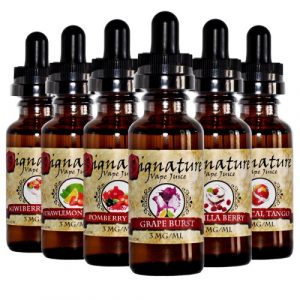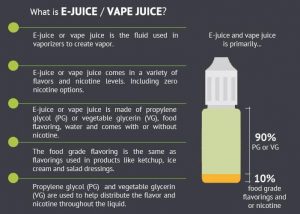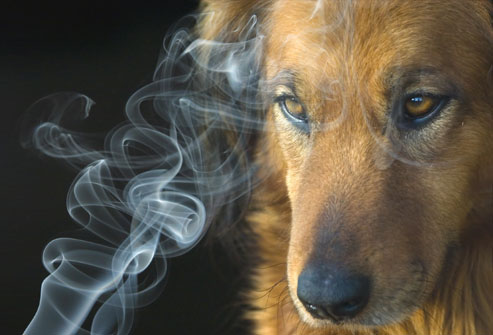Vaping Explained: The trend continues
Vaping has really taken off over the last five years, but what is it and how is it effecting people across the nation?
What is vaping?
Vaping is the inhaling of vapour through a vape machine or pen, this converts the vape liquid to smoke. The vape machine itself, contains a battery, this powers the heating element of the machine in order to vaporise the liquid.
The liquid, or ‘juice’ as it is commonly know, can be used is very similar to syrup and is described as, “a substance diffused or suspended in the air which is originally a liquid or solid turned into a gaseous form”, when smoked. This can be flavoured to taste sweet, for example: caramel, strawberry shortcake and blackcurrant-menthol, just to name a few.

How is this effecting people’s health?
Many people are using vaping as a form of quitting smoking, by switching to smoking vape liquid. By cutting any tobacco intake your body will crave the substance, and so e-liquids available on the market can range in a variety of strengths of tobacco in the liquid, to no tobacco-content at all.
In cigarette smoke there are over 4,000 chemicals, as well as 400 other toxins. This dangerous habit, as everyone already knows can cause cancer, with 43 carcinogenic compounds leading to this. Nicotine, when inhaled also takes approximately six seconds to reach your brain and so this alongside the harmful contents of cigarettes is very detrimental to anyone’s health. Be it by smoking or passive smoking (breathing in other’s smoke).
Dr Lion Shahab supported this in his own study at the University College London,”Our results also suggest that while e-cigarettes are not only safer, the amount of nicotine they provide is not noticeably different to conventional cigarettes.This can help people to stop smoking altogether by dealing with their cravings in a safer way.”
Only around 10% of the vape liquid is flavourings and nicotine…
Click to watch the video below to see the differences between smoking and vaping:
Where to find vape shops and lounges in East Kent
[googlemaps https://www.google.com/maps/d/embed?mid=1nSWaNzboO6LAtms-uyZ7c_hND52Bfzo5&hl=en&w=640&h=480]
What is vape ‘juice’ made of?
The basic ingredients in vape liquid are:
- Vegetable Glycerin/ VG: Made of palm oil, soy or coconuts, this is a thick liquid (syrupy). This is used in many beauty products like shampoo and toothpastes. This is also used in fog machines, alongside distilled water. This is what makes the ‘clouds’ of vapour, that are associated with vaping.
- Propylene Glycol/ PG: This is less dense, sugar-based liquid, often used in asthma inhalers to vaporise the contents, as well as in catering products like icing and also fizzy drinks. This also aids the flavouring of your e-liquid.
- Flavourings: These are often based upon Propylene Glycol and are taken from sweets and desserts, even vanilla extract from Tesco could be used.
- Nicotine: The nicotine strengths in vape liquid are restricted to 20mg/ml in accordance with the Tobacco Products Directive (2014/14/EU) (TPD). This means that at 20mg-ml (2% nicotine) this would be like smoking the equivalent of 35 cigarettes a day. However the strengths range from 0% nicotine- 2% nicotine, this would be a high content of nicotine.

Testimonies: Switching from smoking to vaping
“I switched maybe a year ago now and was smoking for seven to eight years. I started [vaping] at 18mg (1.8%) strength liquid and down to 1.5 mg (1.5%), now sometimes 0 % nicotine strength. [My] chest felt a lot better after a couple days,” – Jack Swift, Chef at the A21 Diner.
“No morning coughing, no yellow teeth, no smelly clothes and more money in my pocket. Plus, I have a sweet tooth and choosing a good liquid allays some cravings at zero calories,” – Al Kane, Canterbury Resident.
In a Canterbury study of 103 people, it was seen that 35 people had negative views about vaping. Fifty-two people had “switched from smoking to vaping and felt positive health effects” including easier breathing, feeling more energetic and coughing less. Around 11 people who answered the survey switched from smoking to vaping and “felt no considerable change in health”. Four of those surveyed quit smoking via the NHS service “Champix” and two Canterbury residents wanted to try vaping when they saw other doing it.

Is vaping harmful?
To people?
According to the Centers for Disease Control and Prevention in the US , “exposure to secondhand vapour does not endanger bystanders with toxic, tobacco-specific combustion by-products”. Alongside this, Public Health England’s 2015 reported that, “E-cigarettes are 95% less harmful than tobacco” to those who smoke it.
To animals?
There have been instances of animals ingesting vape liquid that can be deadly, not only this but fatal if the liquid has traces of nicotine. It is advised to lock e-liquids away from animals and do not let your vaping equipment near animals. Also if you are going to vape, it is safer to vape in another room, outside and away from your animals.
Science Daily released an article in 2002 stating that inhaling of nicotine can “at least double risk of cancer in cats”. However this is after inhaling nicotine filled cigarette smoke, and not vapour.
Nicotine poisoning in pets can be recognised by the following symptoms:
- Vomiting
- Tremors/trembling
- Seizures
- Hyper-salivation
For mor information on the effect of nicotine and nicotine poisoning in pets visit: www.thespruce.com/nicotine-poisoning-in-pets-3385527

To the atmosphere?
The British Journal of Medical Practice did did research into this in 2014 and released the study, stating that “the vapour contains nothing like the concentrations of carcinogens and toxins as cigarette smoke. In fact, toxin concentrations are almost all well below 1/20th that of cigarette smoke.”
Featured image: Photo by Vojtech Okenka from Pexels.
